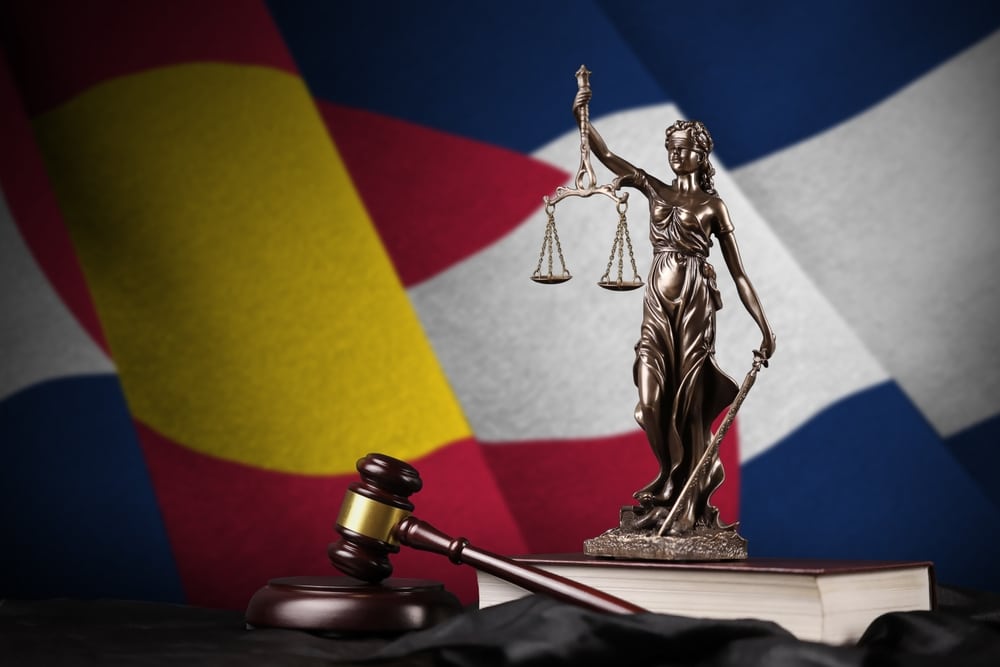Colorado Bankruptcy Guide

Introduction
Colorado’s unique geographic and economic landscape creates distinct considerations for bankruptcy proceedings. From the high-altitude urban corridor along the Front Range to remote mountain communities and agricultural regions on the eastern plains, Colorado residents face specific challenges when navigating bankruptcy. This guide outlines the state-specific rules, exemptions, and procedures that apply to bankruptcy filings in Colorado.

State Bankruptcy Courts
The United States Bankruptcy Court for the District of Colorado operates through four strategic locations to serve the state’s diverse population. The main courthouse and administrative center is located in Denver, with additional courthouses in Colorado Springs, Grand Junction, and Durango. This distribution ensures reasonable access for residents across the state’s vast geographic area.
While the Denver headquarters handles the majority of administrative functions and complex proceedings, each location provides essential bankruptcy services and maintains jurisdiction over its surrounding region. The court’s website (www.cob.uscourts.gov) serves as a central resource for forms, procedures, and updates.
Remote appearance options and electronic filing capabilities help overcome the challenges posed by Colorado’s geography and weather conditions. The court system has adapted to accommodate residents in remote locations and address weather-related accessibility issues.
Colorado Property Exemptions
Homestead Exemption
Colorado provides substantial homestead protection with a base exemption of $250,000 in home equity. This amount increases to $350,000 for elderly residents (60 years or older), disabled individuals, and dependents over 60 years. This enhanced protection reflects the state’s commitment to protecting vulnerable residents’ housing stability.
The homestead exemption applies automatically without requiring formal declaration and covers various housing types, including traditional homes, mobile homes, and manufactured housing. This flexibility acknowledges Colorado’s diverse housing landscape and ensures protection regardless of dwelling type.
Protection extends to the physical structure and the land it occupies, though acreage limitations may apply. The exemption’s automatic nature eliminates procedural hurdles while ensuring consistent protection across all regions.
Personal Property Exemptions
Vehicle exemptions provide protection up to $7,500 in equity ($12,500 for elderly or disabled individuals), recognizing the essential nature of personal transportation in Colorado’s widespread communities. This protection helps ensure continued mobility for work and daily necessities.
Personal items receive varying levels of protection: clothing, books, and family photos are fully protected, while jewelry protection extends to $3,000. Household goods receive protection up to $3,000 per person, and provisions/fuel are protected up to $600.
Health aids receive full protection, acknowledging their essential nature and the potential impact of altitude on medical needs. Family burial sites also receive complete protection, respecting cultural and religious traditions.
Wage Exemptions
Colorado protects the greater of 75% of disposable earnings or 30 times the federal minimum wage. Local cost of living adjustments may enhance this protection, particularly in high-cost regions like mountain resort communities.
Tools of trade receive substantial protection up to $30,000, with agricultural producers eligible for an additional $10,000 in specific protections. This generous allowance reflects the state’s diverse economy and supports continued earning capacity across various professions.
Special provisions exist for agricultural equipment, acknowledging the unique needs of Colorado’s farming and ranching communities. These provisions help maintain agricultural operations through bankruptcy proceedings.
Special Colorado Considerations
State-Specific Requirements
All filers must complete approved credit counseling from providers familiar with Colorado’s unique circumstances. Residency requirements must be met: 91 days for court jurisdiction and two years for using state exemptions.
Altitude considerations affect medical equipment exemptions, particularly for respiratory and oxygen devices. The court recognizes the medical implications of high-altitude living when evaluating health-related exemptions.
Seasonal income patterns, common in tourism, agriculture, and construction, receive special consideration in means testing and payment plan structuring. This flexibility acknowledges Colorado’s seasonal economy.
Median Income Thresholds
Current (2024) median income thresholds determine Chapter 7 eligibility: $73,248 for individuals, $92,556 for two-person households, $106,374 for three-person households, and $123,894 for four-person households. Each additional family member adds $9,900 to the threshold.
These thresholds reflect Colorado’s varied economic landscape, from urban professionals to rural agricultural workers. Regular adjustments account for cost of living changes and economic conditions.
Local Resources and Support
Colorado Legal Services (303-837-1313, www.coloradolegalservices.org) provides essential support for low-income residents. Additional assistance comes through Metro Volunteer Lawyers and the Colorado Bar Association’s referral services.
Credit counseling agencies must receive specific approval for operating in Colorado, with consideration for mountain region accessibility. The Department of Justice maintains an updated list of approved providers.
Professional Requirements and Procedures
Attorneys must gain admission to both Colorado state courts and federal courts to practice bankruptcy law. Electronic filing certification ensures efficient case management and document submission.
Filing fees remain consistent with federal standards: $338 for Chapter 7 and $313 for Chapter 13. Fee waivers and installment payments accommodate financial hardship, with specific attention to seasonal income variations.
Special Circumstances
Mountain and rural considerations significantly impact bankruptcy proceedings in Colorado. Travel distances to courts, weather impacts on deadlines, and remote appearance options receive careful consideration in case management.
Natural disaster provisions address wildfires, floods, and other emergencies common to Colorado. Emergency filing procedures and FEMA coordination help protect residents affected by natural disasters.
Seasonal employment patterns in tourism, agriculture, and construction receive special attention in income calculations and payment planning. These provisions ensure fair treatment for workers in Colorado’s seasonal industries.
Post-Bankruptcy Considerations
Property tax obligations continue despite bankruptcy, though homestead protections remain in effect. Senior tax exemptions may provide additional relief for eligible residents.
Vehicle requirements acknowledge Colorado’s unique transportation needs, including insurance maintenance and special considerations for 4×4 vehicles necessary for mountain living.
Business operations in tourism, agriculture, and outdoor recreation receive particular attention, with provisions for seasonal fluctuations and industry-specific challenges.

Conclusion
Colorado’s bankruptcy system balances federal requirements with state-specific needs arising from geography, climate, and economic patterns. Understanding these unique aspects helps residents navigate bankruptcy successfully while protecting essential assets and future earning capacity.
Successful bankruptcy in Colorado requires careful attention to state-specific rules while considering local economic and environmental factors. Professional guidance familiar with Colorado’s unique circumstances often proves invaluable for achieving optimal outcomes.
